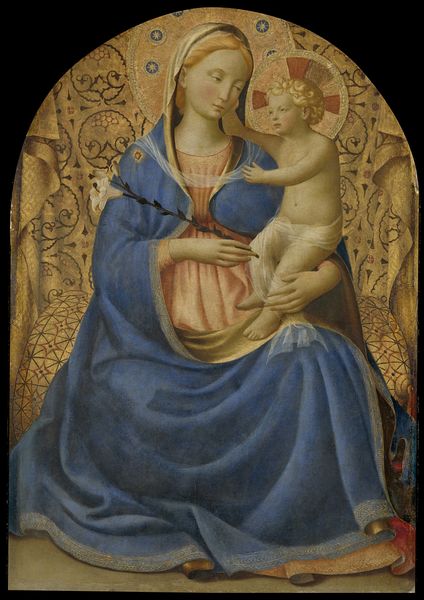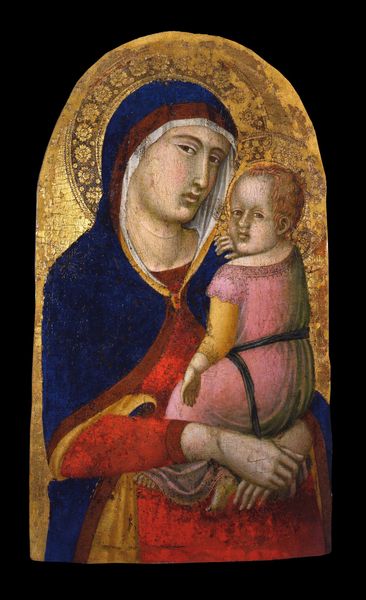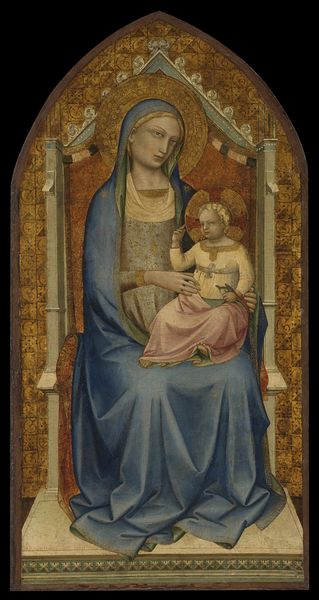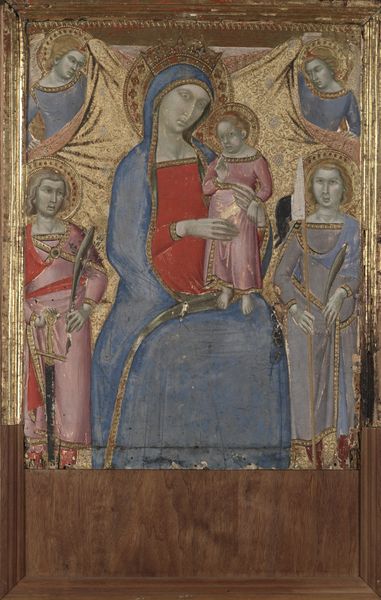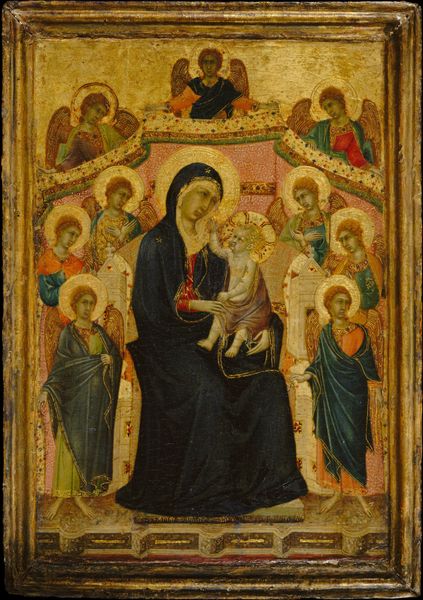
Virgin and Child playing with a Goldfinch and holding a Sheaf of Millet 1379
0:00
0:00
panel, tempera, painting, gold
#
portrait
#
medieval
#
panel
#
narrative-art
#
tempera
#
painting
#
gold
#
gothic
#
figuration
#
italian-renaissance
#
miniature
Dimensions: 105 cm (height) x 58 cm (width) (Netto)
Cecco di Pietro painted this tempera on wood panel depicting the Virgin and Child in Italy during the late 14th century. It’s fascinating to consider how the social and cultural context shaped the creation and interpretation of such images. In this period, religious institutions exerted enormous influence and wealth. Artists, commissioned by the church or wealthy patrons, were tasked with visually reinforcing religious doctrine. The serene depiction of the Virgin and Child, surrounded by gold leaf, served to inspire reverence and reinforce the Church’s power. However, the introduction of the goldfinch and sheaf of millet brings an interesting complexity to this image. One interpretation suggests that the goldfinch is a symbol of the Eucharist because of its diet. It is possible that the sheaf of millet is a symbol of the bread used during communion. To truly understand this painting, we need to delve into the religious and social history of 14th-century Italy, examining the role of the Church, the patronage system, and the visual language used to convey religious ideas.
Comments
statensmuseumforkunst almost 2 years ago
⋮
In this painting the hands carry symbols of death and resurrection. With her long, slender fingers Mary cradles the chubby child, whose hands in turn are extended in a crucifixion-like pose, holding a goldfinch in the left and a sheaf of millet in the right. The bird's right leg is tied to a string; it is caught in the prison of its own body and will only be set free at the moment of resurrection. Thus, the bird also becomes a symbol of resurrection. The string is linked to the sheaf of millet in the Christ Child's right hand. The cereal symbolises the communion bread. The child is regarding the bird, meaning that he is facing his fate; Mary looks out of the image frame, gazing towards the inevitable. Christ wears the cross in a chain around his neck, symbolising death, but he also wears a coral which wards off evil. Cecco di Pietro is a typical painter from early Renaissance Pisa. The figures are stylised and have little volume. The gold background symbolises Heavenly Jerusalem.
Join the conversation
Join millions of artists and users on Artera today and experience the ultimate creative platform.
statensmuseumforkunst almost 2 years ago
⋮
Cecco di Pietro is a typical artist from the early Italian Renaissance. The figures are stylised and have little volume. The surroundings are without depth or perspective. These features tie the motif to the surface and lift it out of the flow of time. The gold ground symbolically denotes that we are in a realm beyond ours, in Heaven. As was common in art at the time, everything has symbolic significance. The infant Jesus holds a goldfinch, which symbolises the Passion - the bird lives on thistles, and so refers to the crown of thorns. The bird has a ribbon tied around its foot. Its fettering symbolises the soul caged in the body. Only with the Resurrection is the soul set free. Thus, the bird also becomes a symbol of resurrection. The sheaf of millet in the child’s right hand symbolises the bread of communion, and the coral around his neck protects the child against evil.








